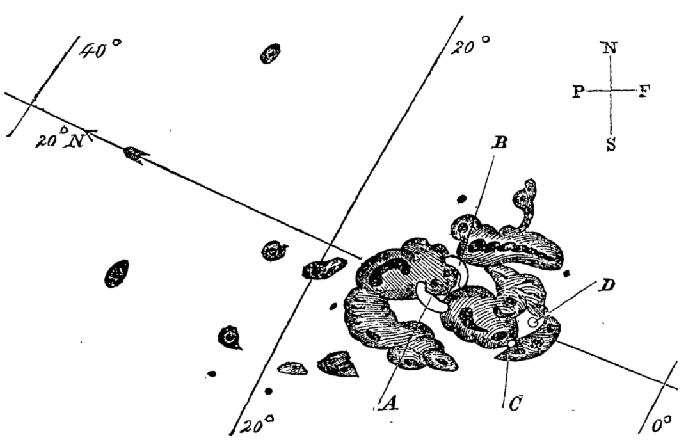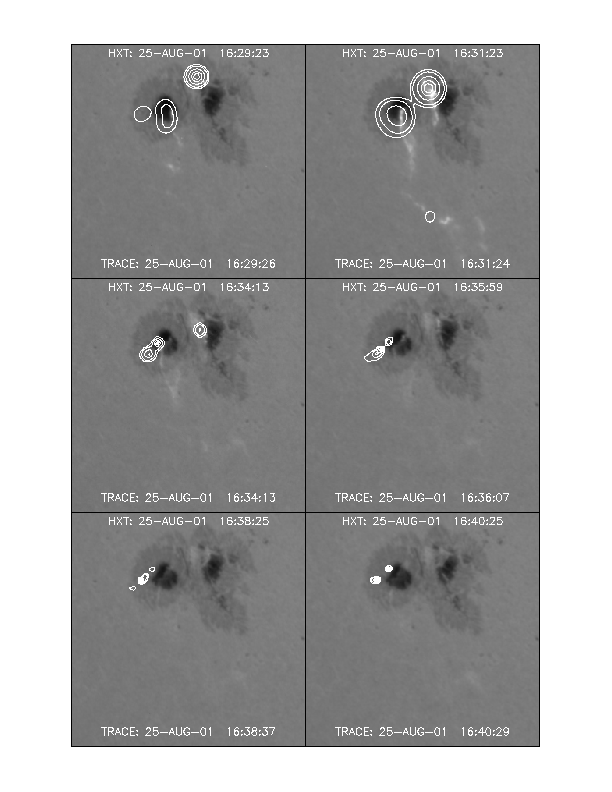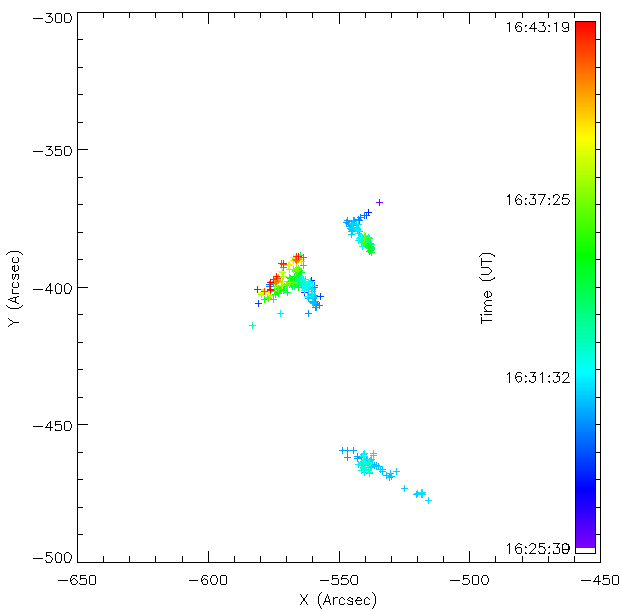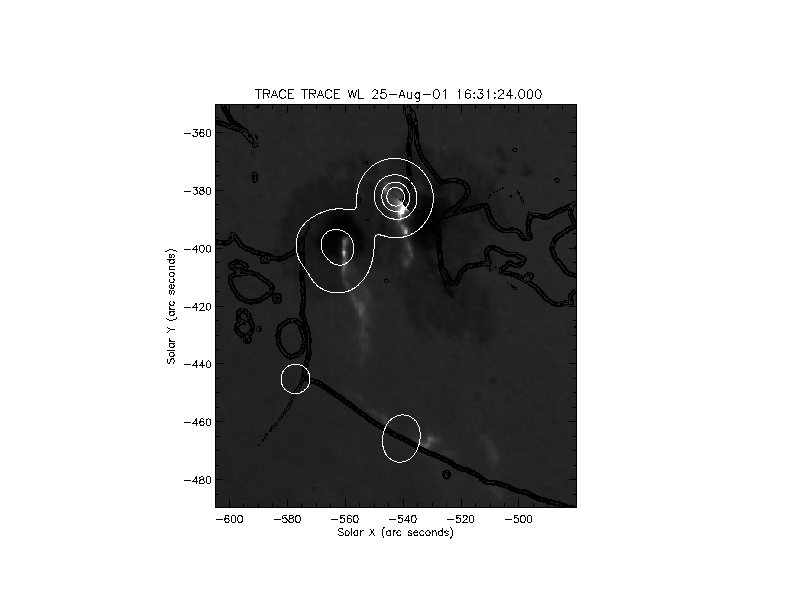The Magnetic Topology of a White Light Flare
Science Nugget: March 5, 2002
Introduction
In a previous nugget (August 31, 2001) we had
a first look at a "white light flare" observed with Yohkoh and TRACE.
Since that time, more analysis has revealed this to be a very interesting
event. White light flares are very interesting
since the are among the most energetic flares observed. In fact,
the very first flare ever observed was a white light flare. This
famous first flare was observed by R. C. Carrington on September 1, 1859.
Just for fun, here is a drawing of that flare made by Carrington:

The white light flare is is labeled by "A", "B", "C", and "D.
If you compare Carrington's drawing to the images below, you'll notice
some similarities: the white light emission is embedded in a sunspot
complex (the dark patches in Carrington's drawing) and there are two main
ribbons of white light emission ("A" and B") as well as some smaller patches
of white light emission ("C" and "D"). This is a common morphology
for these very energetic events.
A More Detailed Look at the White
Light Flare
Here is a sequence of images showing the
TRACE white light data and the Yohkoh/HXT hard X-ray data for the 2001-August-25
white light flare:

The underlying image shows the TRACE white light flare and the contours
show the hard X-rays seen from HXT.
One of the interesting features of this event was the motion of the
hard X-ray sources. Below is a plot showing how the hard X-ray sources
move with time. The '+' signs indicate the location of the HXR sources
and the color of the marks show the time the source was at that location.

The source at the bottom of the plot is moving at 400 km/sec directly
along a "magnetic separatrix", a boundary that divides various regions
of magnetic field. The connectivity of the magnetic field is discontinuous
at the separatrix and these boundaries are thought to play a role
in the release of stored magnetic energy in solar flares.

In the figure above, the image shows the TRACE white light flare, the
white contours show the Yohkoh hard x-rays, and the dark contours show
the magnetic separators. Looking at the previous figure, you
can see that the white circle of hard X-ray emission at the bottom of the
figure is moving along the black contour to the right. The hard x-ray
emission shows where the high energy electrons that are accelerated in
the flare are impacting the solar chromosphere.
Conclusions
Magnetic separators are thought to be involved
in the release of magnetic energy during solar flares. It is remarkable
to see the hard x-ray emission moving directly along a separatrix.
It seems that we have observed a case of energy release (indicated by the
hard x-ray emission) involving the separator. The idea here
is that the energy is released in the solar corona and the electrons that
produce the hard x-rays make their way down to the chromosphere to the
observed separatrix. But the whole separatrix does not light up in
hard x-rays all at once. Rather the source moves along the separatrix
indicating that the energy release site is also moving in the corona, most
likely along the separator. Of course, this can't be the full description
of how the energy release works in this flare since the other two hard
x-ray sources do not lie along the separatrix.
March 5, 2002
T. Metcalf <metcalf@lmsal.com>



